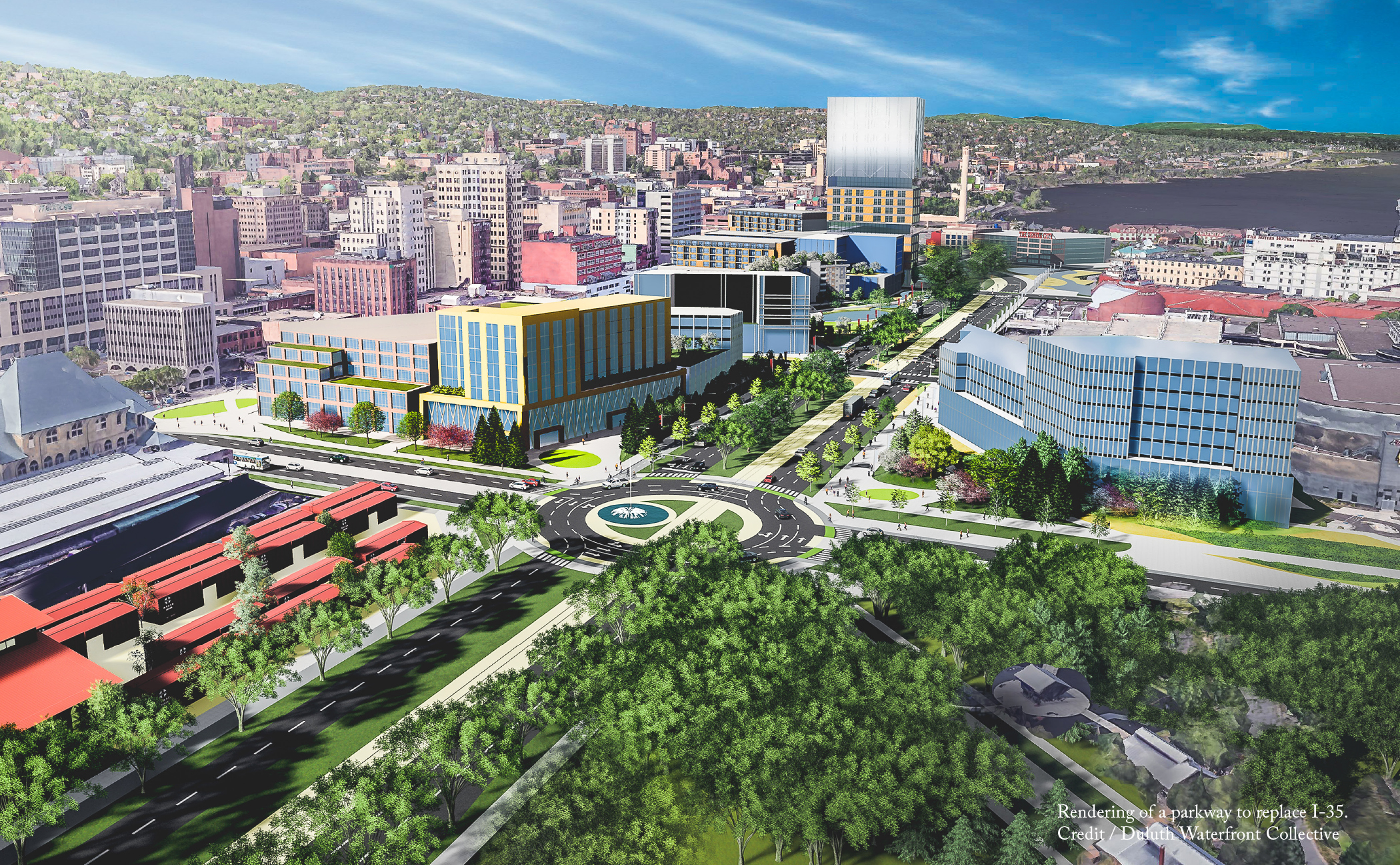History and Context
In Duluth, the 1,569-mile long I-35 comes to its northern terminus. It ends unceremoniously at a four-way intersection, but not before it bisects Duluth’s downtown and separates it from its Lake Superior waterfront. A coalition of residents, the Duluth Waterfront Collective, is seeking to restore this connection and create a more vibrant city center by replacing the highway with a street that integrates downtown and the waterfront. The work of this coalition offers a valuable lesson: highway building can be just as damaging for small cities too.
A highway that consumes nearly 20% of all space in Duluth’s downtown, is extremely at odds with the city’s population of 85,618 people. Residents recognized this from the start. After the initial portion of the highway was built through West Duluth and Lincoln Park, residents formed the Citizens for Integration of Highway and Environment in an attempt to steer the highway’s path as it approached downtown. The group ultimately thwarted a plan to build the highway directly along the waterfront, preserving that natural asset, but were unsuccessful in keeping the freeway out of the city’s downtown entirely.
Current conditions make it very appealing to remove the portion of I-35 that runs through downtown, which the Duluth Waterfront Collective advocates for. Traffic on the highway is incredibly light for an Interstate, totaling only 32,000 trips per day. Meanwhile, the Canal Park neighborhood and the preserved green space along the waterfront have become some of the most visited places in Minnesota, yet much of the Duluth community is unable to enjoy it as an amenity. With limited places to cross, the highway limits local travel to and from Canal Park, with the result that few of the park’s visitors make their way into Duluth’s downtown and spend money there. Uphill from downtown is Duluth’s Central Hillside neighborhood, which is one of the city’s most diverse. It has a high number of residents living in poverty, many of whom do not own cars. The presence of I-35 limits their enjoyment of the waterfront as well.
Proposal
As a replacement for the highway, the Duluth Waterfront Collective envisions a new parkway that condenses I-35 and Railroad Street, but would only increase through travel times by a few minutes. The parkway is planned to be much more accessible to pedestrians and cyclists, with wide sidewalks lined by trees and a new cross-city recreation trail. It’s current iteration calls for dedicated space for bus rapid transit, and includes a rail corridor for the local tourist excursion train and potential future transit options. In the center of the parkway, a landscaped median will provide even more green space in addition to capturing stormwater from the hillside and floodwater from the lake.

The current iteration of the plan also reclaims 20 acres of land from the highway that can be developed in ways that alleviate considerable housing concerns and provide entrepreneurial opportunities for members of the community. It’s a catalytic opportunity to revitalize Duluth’s downtown and help the city fund services for residents by increasing its tax base. The Duluth Waterfront Collective has estimated that the removal of properties to make way for I-35 has cost the city over $3.5 million in lost tax revenue each year since construction started in 1967.
Most importantly, the Duluth Waterfront Collective stresses that its proposed plans are a ‘living concept’, which it updates based upon feedback it receives from the community. The group has taken to conducting the outreach typically undertaken by planning agencies, hosting monthly meetings to discuss the proposal with community members and stakeholders. From this engagement, the Duluth Waterfront Collective will have assembled a community vision for what a great downtown should be, which they can present to the Minnesota Department of Transportation the moment it considers what to do with the highway.


















